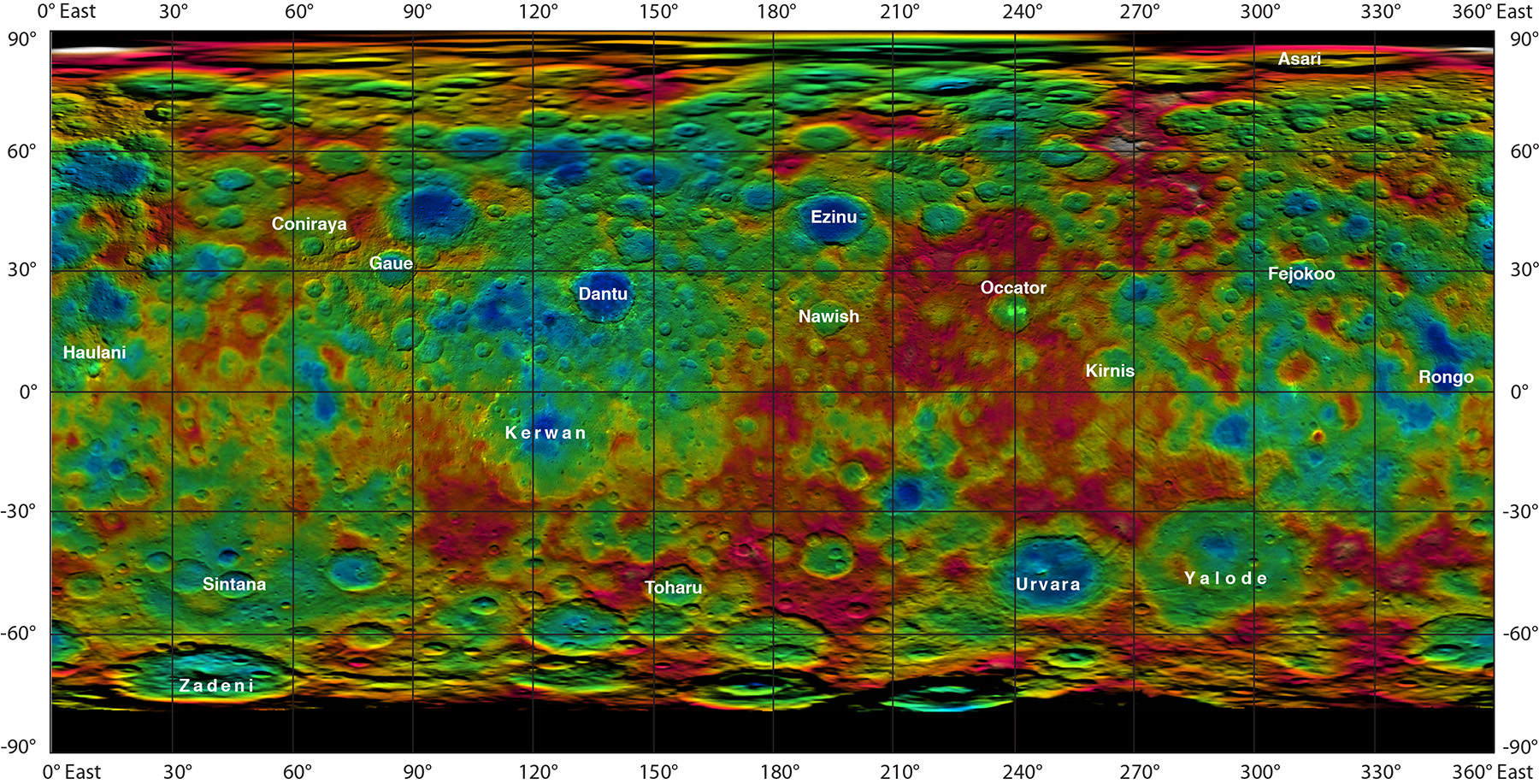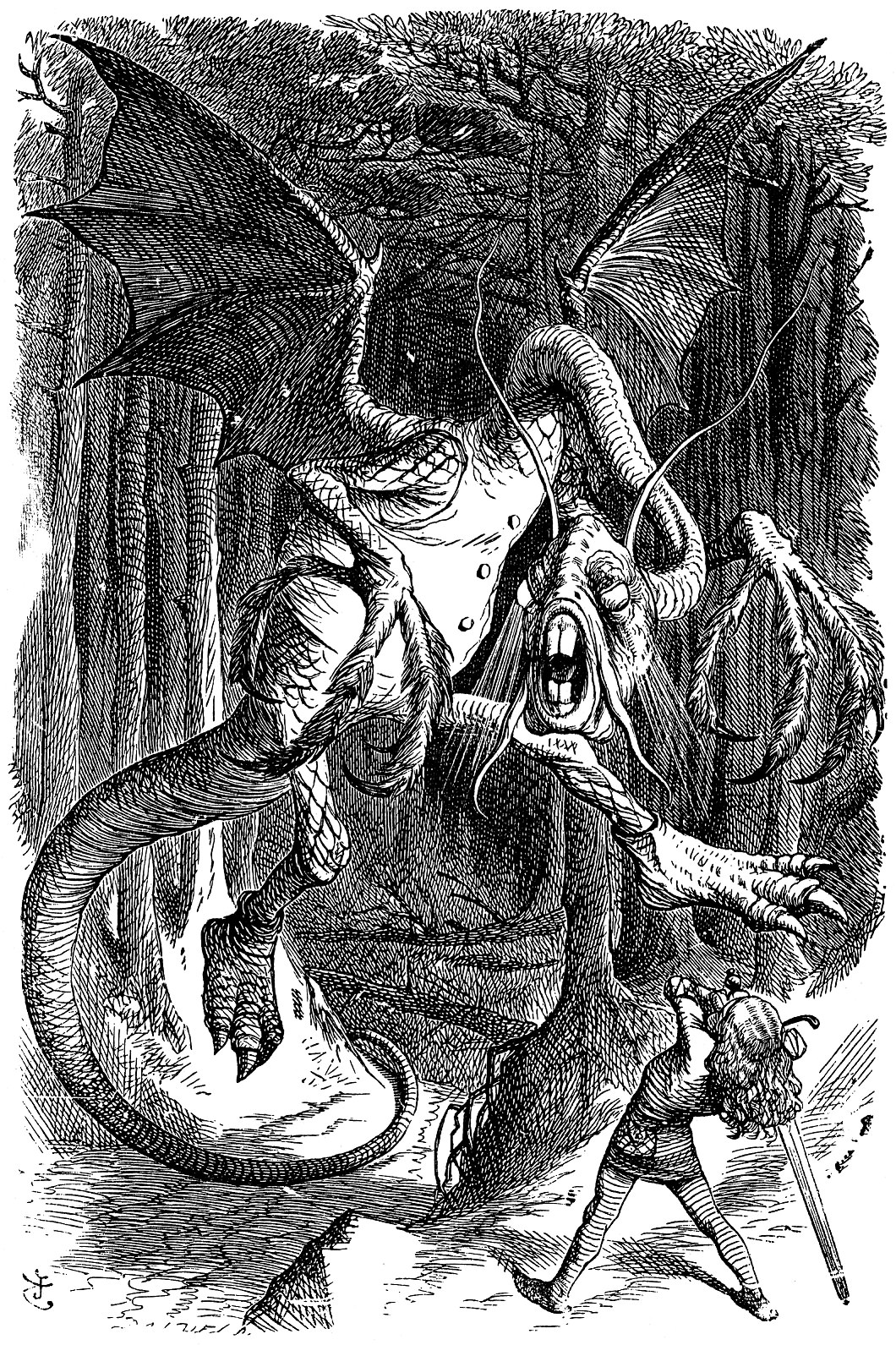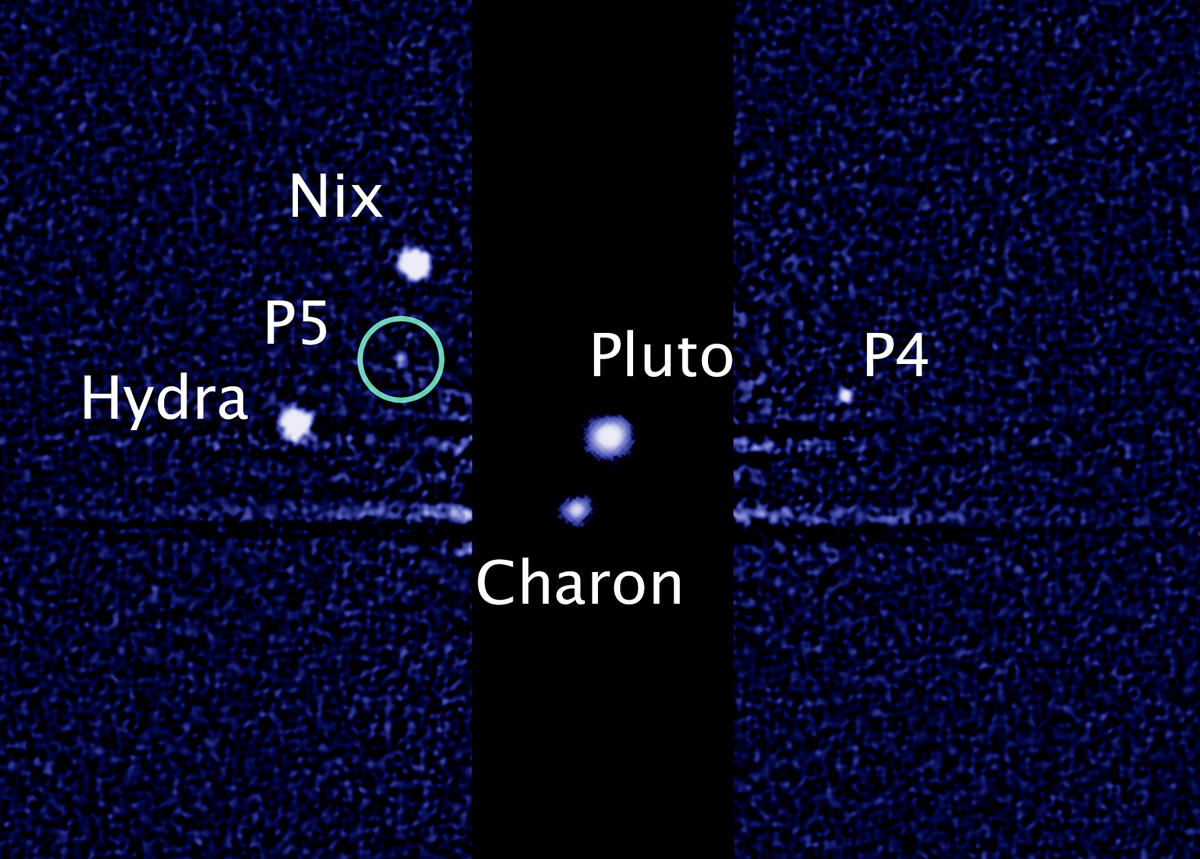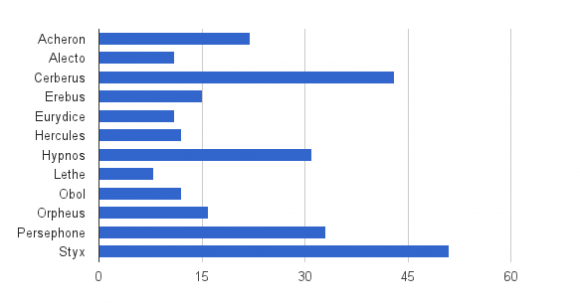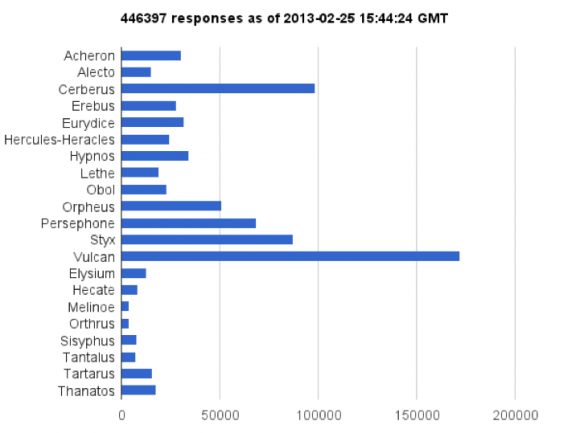Ceres’ topography is revealed in full (but false) color in a new map created from elevation data gathered by NASA’s Dawn spacecraft, now nearly five months in orbit around the dwarf planet orbiting the Sun within the main asteroid belt.
With craters 3.7 miles (6 km) deep and mountains rising about the same distance from its surface, Ceres bears a resemblance to some of Saturn’s frozen moons.
“The craters we find on Ceres, in terms of their depth and diameter, are very similar to what we see on Dione and Tethys, two icy satellites of Saturn that are about the same size and density as Ceres,” said Paul Schenk, Dawn science team member and a geologist at the Lunar and Planetary Institute (LPI) in Houston, TX. “The features are pretty consistent with an ice-rich crust.”
Check out a rotation video of Ceres’ topography below:
In addition to elevation mapping Ceres has also had some of its more prominent craters named. No longer just “bright spot crater” and “Spot 1,” these ancient impact scars now have official IAU monikers… from the Roman Occator to the Hawaiian Haulani to the Hopi Kerwan, craters on Ceres are named after agriculture-related gods and goddesses of mythologies from around the world.
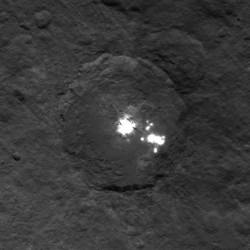
See a full list of Ceres’ named features here.
Dawn is currently moving closer toward Ceres into its third mapping orbit. By mid-August it will be 900 miles (1448 km) above Ceres’ surface and will proceed with acquiring data from this lower altitude, three times closer than it has been previously.
At 584 miles (940 km) in diameter Ceres is about 40 percent the size of Pluto.
NASA’s Dawn spacecraft is the first to successfully enter orbit around two different mission targets and the first to orbit a dwarf planet. Its first target was the asteroid Vesta, which it orbited from July 2011 to September 2012. Dawn arrived in orbit at Ceres on March 6, 2015 and there it will remain during its primary science phase and beyond; Ceres is now Dawn’s permanent home.
Learn more about the Dawn mission here and find out where Dawn and Ceres are now here.
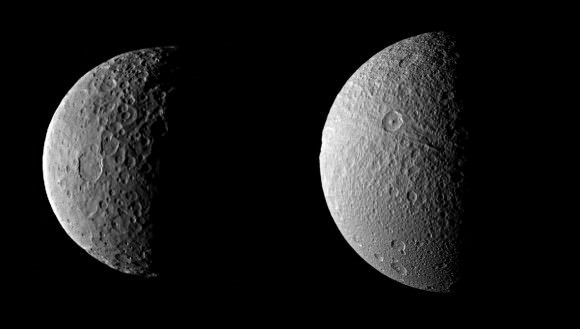
Source: NASA

